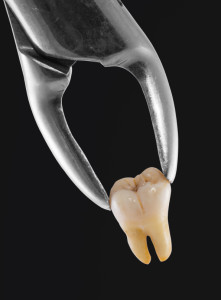 While often seen as a last resort, tooth extraction becomes necessary in some situations. Among the several reasons that may necessitate a tooth extraction, one stands out as the most prevalent and this post will delve into the gist of things.
While often seen as a last resort, tooth extraction becomes necessary in some situations. Among the several reasons that may necessitate a tooth extraction, one stands out as the most prevalent and this post will delve into the gist of things.
The Most Common Reason for Extraction: Severe Tooth Decay
Severe tooth decay, or advanced dental caries or cavities is the most frequent cause of tooth extraction. Dental caries, usually fueled by poor oral hygiene, sugary diets, and inadequate dental care, can lead to the gradual breakdown of the tooth’s structure. When the cavities penetrate the enamel and dentin, and reach the sensitive pulp inside, they can cause pain, inflammation, and even infection.
Why Does Severe Tooth Decay Lead to Extraction?
Once dental decay hits an advanced stage, the affected teeth are less likely to respond to less invasive treatments like root canals or filings. If the damage is at a point that affects the tooth’s structural integrity, extraction becomes the viable course of action to avoid further complications. Leaving a severely decayed tooth unaddressed can lead to issues like:
Pain & Discomfort– When the nerves within the tooth are exposed, it becomes sensitive to pain and sensitivity.
Infection– Bacteria can make their way to the pulp chamber, causing an infection that can spread to the surrounding areas.
Abscess Formation– An abscess is a pocket of pus that can develop at the root of the tooth, leading to extreme pain and inflammation.
How to Avoid Severe Tooth Decay
Preventing extreme tooth decay is vital in avoiding extraction. That said, here are simple but effective tips to keep your teeth healthy and free from cavities:
1. Brush Regularly– brush at least two times per day using fluoride toothpaste. This will help remove food particles and plaque, which left unattended can build up and cause decay.
2. Floss Daily– Flossing helps clean between teeth and in parts where your toothbrush cannot reach properly.
3. Watch Your Diet– Sugar feeds bacteria that aid in the development of cavities. So limit sugary foods and beverages and instead stick to a balanced diet rich in whole grains, vegetables, and fruits.
4. Regular Dental Check-ups– Having dental check-ups is recommended for detecting and treating cavities early enough. A great dentist will be able to identify potential issues before they escalate.
The Takeaway
Extreme tooth decay stands out as the prevalent reason for tooth extraction. Keep in mind that prevention is key to avoiding the need for tooth extraction and you can ascertain this by practicing good oral hygiene, visiting your dentist in Baltimore regularly, and maintaining a healthy diet.

